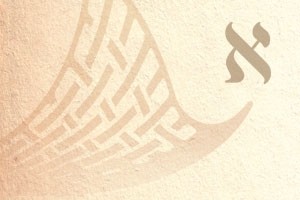Piel
Piel
Let me be immediately up front with you: this brief blog is going to be difficult for me to write and, most probably, even harder for you to read and comprehend. There are several reasons I say this. First off, the general context is the language of the Bible’s Old Testament: biblical Hebrew. To the majority of seminary students pursuing degrees pastors and teachers normally pursue, biblical Hebrew notoriously is the most difficult course of all. Pastors Matt and Paul took two years of biblical Hebrew; they would most probably concur. In his recent sermons from Genesis, Pastor Matt has regularly noted that certain verbs are in the Piel conjugation. Time does not allow in a sermon to go into a full definition and extrapolation of the word. Therefore he has asked me to do that in a blog. This is it.
Verbs are the parts of speech used to describe an action (he studied) or state of being (she is wise). It has been calculated in the Hebrew Bible that there are approximately 23,000 verses. These verses contain almost 72,000 verbs, or about three verbs per verse. It is not difficult to understand that you must comprehend the Hebrew verbal system in form, function and meaning in order to succeed in the Hebrew language.
Specifically, the focus of this blog is the Hebrew verb. Here again, I must initially acknowledge the difficulties involved. Of all the many topics involved in taking first-year Hebrew, the verb is undoubtedly the hardest. Finally, in this introduction, I must add this fact: arguably, the most difficult conjugation is the Piel. See where I’m coming from in these opening words
The Hebrew verb is comprised of seven conjugations. A verbal conjugation is a set or group of verbs according to their endings. “Conjugation” may be found either as a singular or plural term; the piel conjugation is one of the seven conjugations of the Hebrew verb. Sometimes you will see the words “stem” or “pattern” used synonymously for “conjugation”: the Hebrew verb is comprised of seven stems or patterns. The following is the chart I use when I teach on the Hebrew verb at seminary; although I assure you that I do not expect you to be able to make sense of most of it (my seminary students are not introduced to this chart until they have been studying Hebrew for two full months of weekly three-hour classes), I believe if you spend a few moments thoughtfully reading through the last column, “Verbal/Grammatical Characteristics,” you will absorb enough understanding – in spite of the occasional Hebrew word – to benefit from this abbreviated blog.
THE SEVEN HEBREW VERB PATTERNS
| English
Spelling |
Hebrew
Spelling |
Spelling
Distinctions |
Verbal/Grammatical
Characteristics |
| Qal |
קַל |
unaugmented (no prefix or special changes) | Simple Active – The simple, basic, or easy verbal stem. Generally active in voice, but a few passive forms. “He guarded.” |
| Niphal |
נִפְעַל |
נ prefix; patach stem vowel | Simple Passive/Reflexive – Simple action in passive or reflexive voice. The נ prefix is relatively easy to spot; only the Niphal has it. “He was guarded” or “he guarded himself.” |
| Piel |
פּעֵל |
hireq-sereh vowel pattern | Intensive Active – Generally expresses intensive simple action. What would be “he broke” in the Qal would be “he shattered” in the Piel. THIS IS THE BASIC IDEA OF THE PIEL. |
| Pual |
פֻּעַל |
qibbuts-patach vowel pattern | Intensive Passive – The passive form of the Piel. Because the Piel is intensive, the Pual is intensive. “He was shattered.” |
| Hiphil |
הִפְעִיל |
הִ prefix; hireq-yod stem vowel | Causative Active – Expresses causative action with an active voice. “He was king” or “he reigned” in the Qal” would be “he caused to reign” or “he made (another) king.” |
| Hophal |
הָפְעַל |
הָ qamatz-chatuf prefix; patach stem vowel | Causative Passive – The hophal is the passive form of the Hiphil. “He was made king.” The ה prefix on both the Hiphil and Hophal is relatively easy to detect. |
| Hitpael |
הִתְפַּעֵל |
הִת prefix; sereh stem vowel | Intensive Reflexive – Expresses intensive action with a reflexive or sometimes passive voice. “He hid” in the Qal would be “he hid himself” in the Hitpael. Hitpael verbs are relatively easy to discern because of their length. |
The important thing to gain from this brief study is to obtain some understanding of the Hebrew Piel verb pattern so that the next time Pastor Matt happens to mention this strange word in his sermon, you will have some idea what he is talking about. He will be pointing out some intensification of the verse, an intensification that is important to note for it is putting the spotlight on something that aids our understanding and appreciation of the verse. I think you’ll agree that anything that accomplishes this is well worth struggling through a difficult blog such as this.
Let me end with this: in my Hebrew class, I just finished teaching through Isaiah 53 (which more accurately begins not with v. 1 of chapter 53, as our English translations, but with v. 13 of chapter 52). As you most probably know, Isaiah 53 is one of the most sublime passages in all of Scripture, extolling as it does the spellbinding prophetic account of the Messiah’s birth, death, and resurrection, written more than 700 years before Christ’s incarnation. In the chapter’s most vivid accounts, such as especially the substitutionary passage of vv. 4-8, we find prominent use of both the intensive active Piel and its grammatical counterpart, the intensive passive Pual. When noticed by the reader, the already exquisitely emphatic passage takes on even more intensity (note the words “afflicted” (v. 4), “crushed” (v. 5), “considered” (v. 8), and “crush” again (v.10), which are Piel or Pual forms. Without leading you further into the weeds than I already have in this blog, to those who might be tempted to think these examples might not be enough to warrant my exuberance, allow me to add there are several other contributory grammatical features, such as the emphatic use of the personal pronouns referring to Jesus) in this passage that add strong support for my words.
Even a rudimentary knowledge of the intensive verb patterns of the Piel and Pual, as this blog is intended, is a valuable addition to any Bible student’s arsenal. We are all blessed to have a Pastor, who in the faithful preaching and teaching of God’s Word, cares enough to regularly mention such insightful grammatical particulars such as these. To God be the glory!
– Professor Thomas A. Rohm



